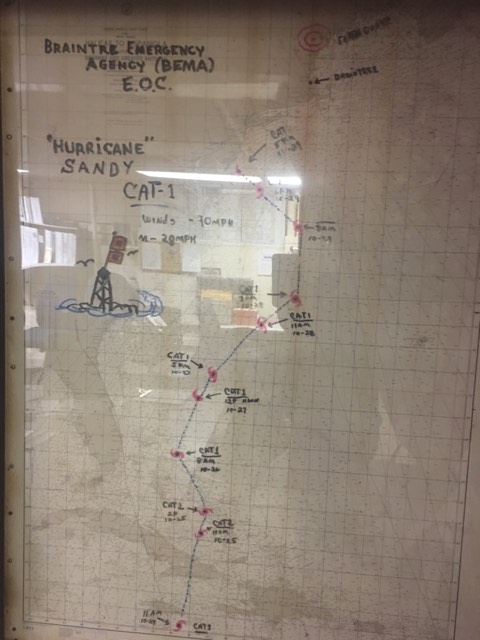Meteorology is widely recognized as being a segment of the news. A Meteorologist comes on the television, gives the forecast for the week, talks about any current advisories, watches or warnings, and talks about how the weather may impact any major local events like a Red Sox game. These forecasts can be very generic for a region, giving temperatures for only a few cities or precipitation or winds over a general area. Emergency first responders require information on a much more local scale. Incident Meteorologists are on hand to provide that information.
On June, 27th, 2009, Rocky Marciano Stadium in Brockton, Massachusetts held a Drum Corps show. While the day had generally sunny skies, the potential for thunderstorms had been forecast. Several Corps were practicing on local fields and concessions had just fired up the grills. The storm that hit Brockton that afternoon was the only thunderstorm that occurred in the area that day. It approached from an angle that did not allow those participating in the day’s events to see the approaching storm over the trees and high school. Strong winds arrived just before the heavy rain, with more than an inch of rain falling in less than an hour. Several bolts of lightning struck the area, including one that hit one of the light poles in the stadium itself, showering a section behind the stands with glass and knocking out the power to several buildings on the field. Fortunately, the organizers of the event had already shut down the practices and gotten everyone inside where it was safe. These decisions were made with the assistance of an onsite Meteorologist who monitored the incoming weather and provided that information to the organizers of the event. But not all people have had this protection available to them.
Over the years, many outdoor venues have been struck by lightning, caught up in high winds, or were hit by other severe weather phenomenon. On August 13th, 2011, the grandstand at the Indianapolis State Fair collapsed right before a concert when the area was hit by strong winds ahead of a cluster of thunderstorms. The storms themselves were still several miles away, but the area of high winds, known as a Gust front, had travelled well ahead of the storms. An onsite meteorologist would have been able to identify the signature of the winds on radar, something the organizers of the concert were unable to do.
These days, modern technology has allowed apps to replace many of the sources of information that people used to rely on. With just the push of a button the National Weather Service can send an alert to millions of mobile devices to alert their owners of an incoming severe thunderstorm, but they can’t alert them to when lightning will strike ahead of that storm.
Incident Meteorologists serve on the front lines of the forecast, travelling to the location of incidents or planned events to provide forecasts for that specific area and to lend their knowledge of storm hazards to those who need them. Lightning can strike several miles away from the cloud in which it originates and strong winds can occur dozens of miles ahead of the storm system that brings them. Meteorologists who are out in the field can use that knowledge to send people to shelter long before your average citizen would do so. Even today, with large wildfires burning across large portions of Oklahoma, Meteorologists are onsite, forecasting wind directions for the fire line so firefights don’t suddenly find themselves in an area that’s in the path of an oncoming fire.
Whether it’s forecasting those winds for firefighters, informing a sport venue of impending thunderstorms or forecasting turbulence for the landing of a MedFlight, meteorologists aren’t just on your TV, they’re out ensuring that weather conditions are safe for those participating in thousands of events across the country.
Robert Millette

